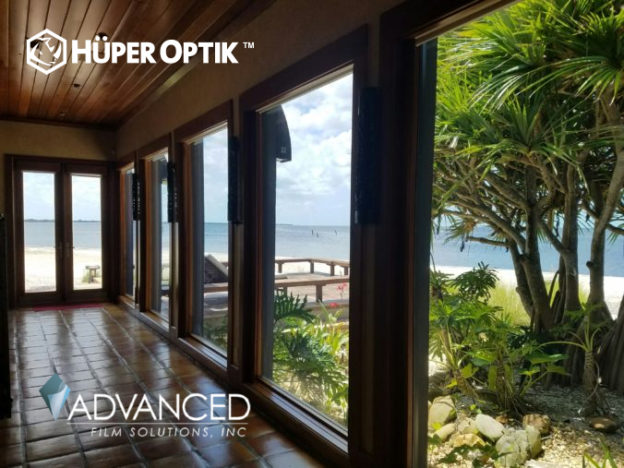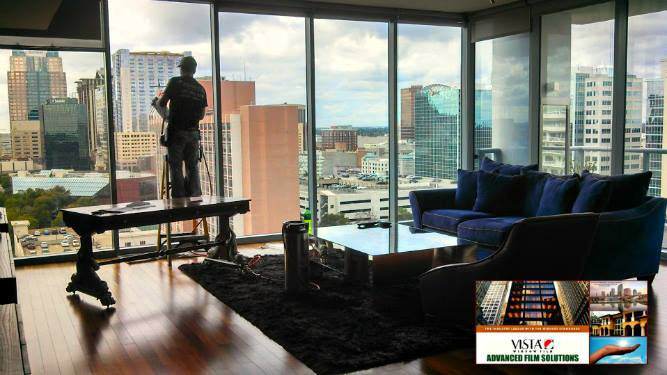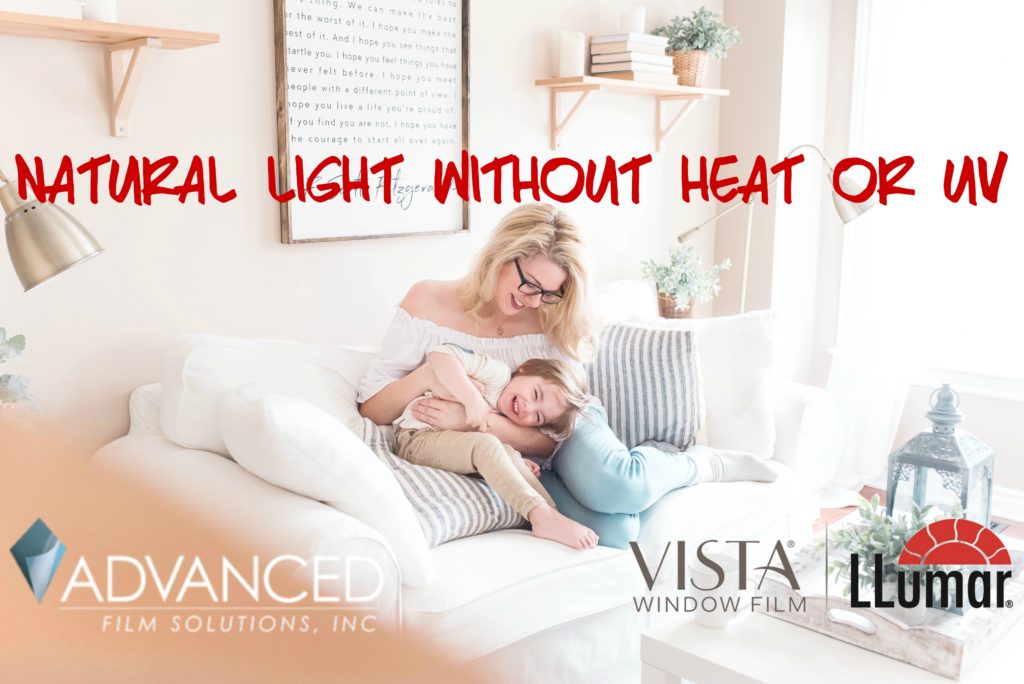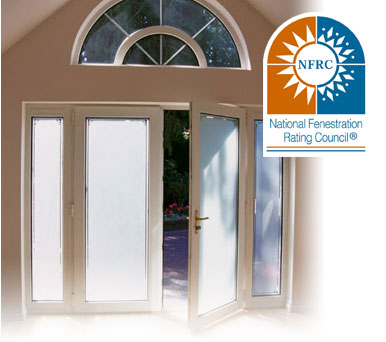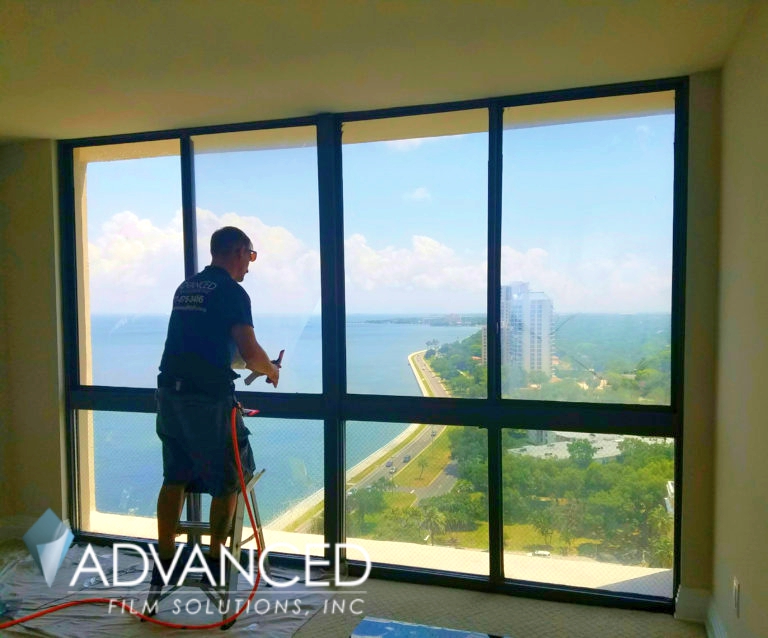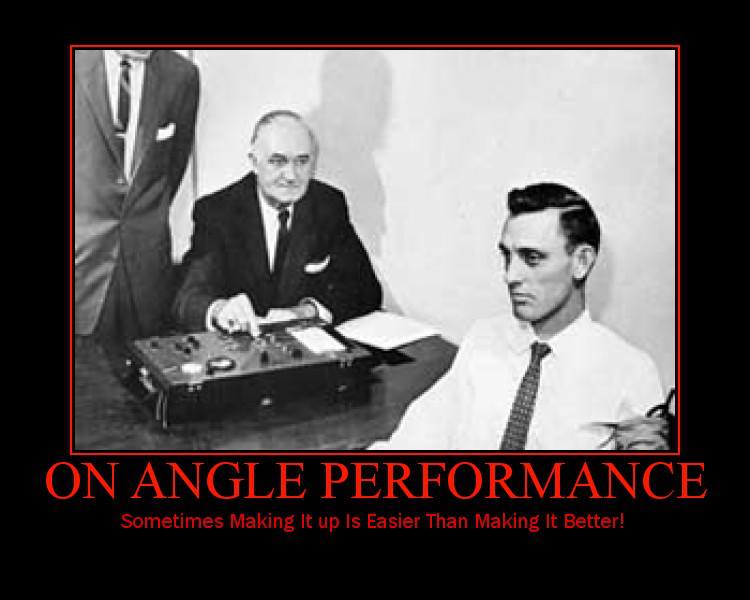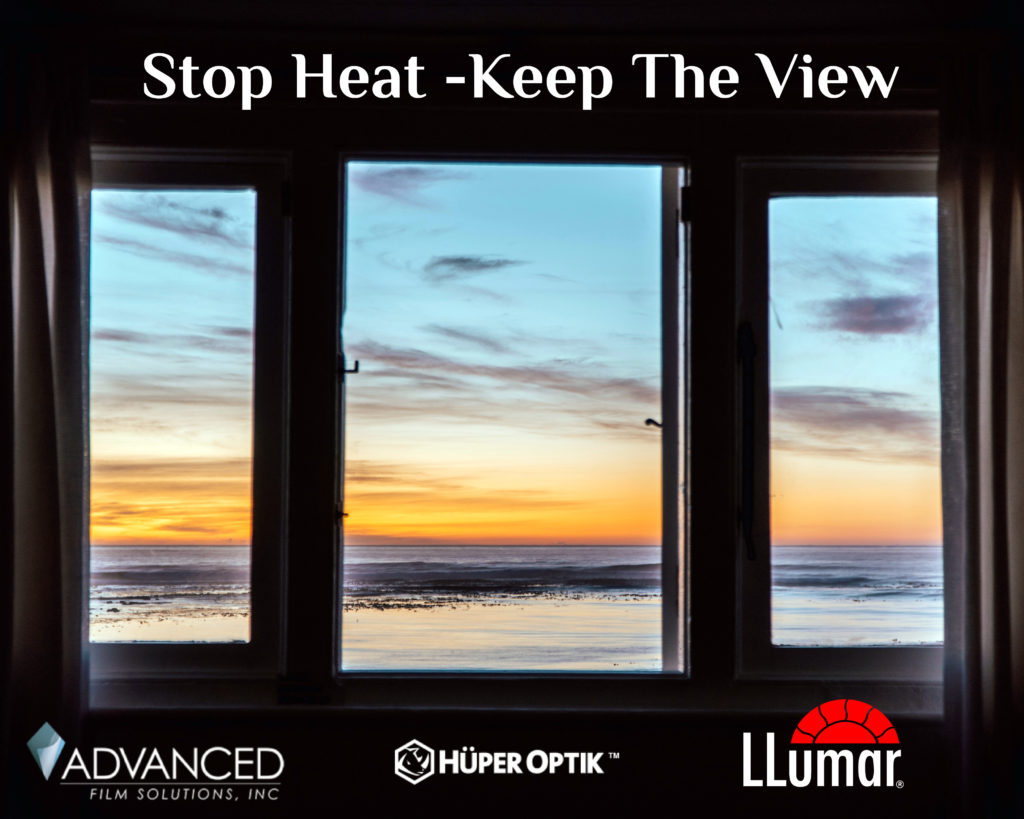Most people don’t realize that energy hitting us from the sun is divided into visible light and infrared wavelengths.
What our bodies feel as heat in most cases is the thermal IR wavelengths.
Temperatures however reflect the combined wavelengths of visible light and the IR wavelengths. Infrared light from the Sun accounts for 49% of the heating of Earth, with the rest being caused by visible light that is absorbed then re-radiated at longer wavelength.
Most reflective and non-reflective solar control window films filter the amount of visible light based on the consumer’s requirements. For example a film that factors out 95% of the visible light will be extremely dark (car tint will call this limo!)
This limo film will provide almost complete privacy (which is why it’s used!) but just how much heat is it blocking?
Well a metallic reflective 5% visible light film will block nearly 83% of the total solar energy from the sun!
A quality non reflective car tint like LLumar ATR will block 63% of the total solar energy.
The missing heat is largely in the IR wavelengths.
Now lets say you could develop a coating that can block ir heat by 80% and a low amount of visible light. You’d have a 70% visible light transmitting film that amazingly can filter out 49-50% of the total solar energy! Considering how light that film would be a 50% total solar energy heat rejection would be pretty darn good!
Let’s also assume that the technology to produce that film might require a manufacturing cost either in materials, technology or the raw materials that could accomplish this feat. Naturally a supplier would add a premium cost that would be passed down to the consumer.
Ideally you’d consider a combination of visible light and IR heat rejection to find the perfect balance between visible light and IR rejection to match what your customers required.
Now let’s try to sell a film coating that is very light and blocks roughly 50% of the total solar energy at a high cost to a consumer for their car.
Let’s take Florida where the tint laws allow you to have a 30% VLT film on the front windows and a 15% VLT film on the rear windows.
You could explain to your potential client that they can have their windows very light (allowing glare, additional interior fading and greater visibility from the exterior)
You might extol the virtues of safer night driving for older consumers.
Or you could trick them, gimmick them and snake oil sell them into believing this lighter film blocks more heat than a darker; better heat rejecting film.
If you could trick them- -would you?
Well unfortunately you can deceive consumers in a very simply easy to do gimmicky piece of illusion.
You take a French fry IR heat lamp that blasts IR heat only at temperatures hotter than 800 degrees. These lamps have a very low level of light so your lamp is only targeting 50% of the heat of the real world.
You could use a BTU meter to pretend that your film was knocking down 97% of the heat and compare it directly against a coating that blocks much more visible light heat and a smaller amount of IR.
Your IR film would look like it’s kicking the butt of that visible light film because your mark (you the consumer!) doesn’t know that they are leaving out 50% of the sun’s energy.
You could even stoop to sticking a candy bar in front of that lamp comparing how fast it would melt with a limo type film compared to your very light IR film.
Just for drill take two layers of limo tint and compare it against a very light IR film!
The soon to be hoodwinked consumer would really be impressed with this trick wouldn’t they?
That is until they realize this is a scam. That this film is only blocking half the real world heat and that in order to get their film to a modest light transmission for the real world like a 40% light transmission; they would have to use fragile dyes that will eventually degrade.
That’s 3M Crystalline film for you!
The same trickery being used at home depots to make believe their film blocks more heat for higher prices.
You might even hear baloney about this film working better at angles (glass works the same way and all films work better when less total solar energy hits the glass or film!)
Call Tampa Bay and Orlando Window Film Advanced Film Solutions toll free at 877-575-3456
No baloney just NFRC rated, tested and documented performance.
No French fry lamps, no gimmicks, no nonsense, no melted candy bars!
Just the best home, commercial and automotive films in the world!

